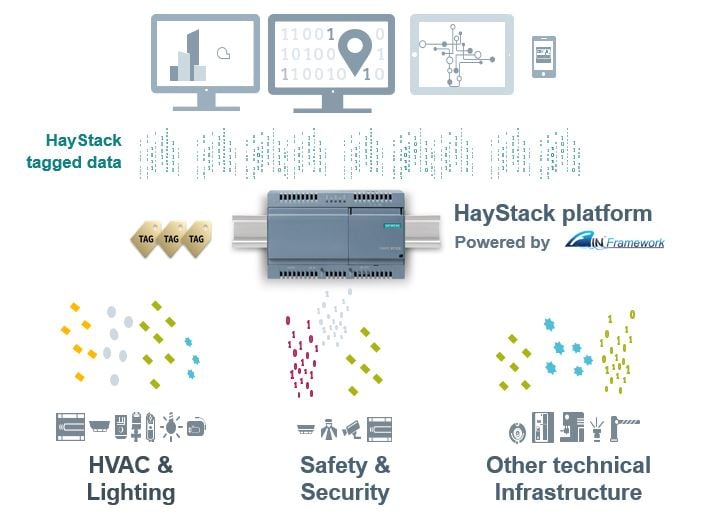The home of smart buildings, smart equipment and IoT

Project Haystack is an established open source initiative whose mission is to provide the building automation industry and related IoT applications with a standardized way of defining the context and meaning of building related data. This standard is already used by many companies around the world (on more than 30,000 sites) because it makes integration and cross domain data sharing much easier and therefore less expensive. Historically, each building project is configured differently, making it hard for data to be exchanged and analysed. Use of Haystack tagging transforms the situation; data is now shared with its full context and can therefore be abstracted and processed by analytics applications automatically.
You may not yet be aware of a very significant development regarding the Haystack standard. In March of this year, Project Haystack announced the public review of Haystack 4.0. The new version adds data-modeling features that support the implementation of both a taxonomy and the resulting ontologies that define the relationship of things and between things. This is a game-changer. Previously some organizations had been looking at Brick and other data modeling schemas because, whilst Haystack has done a great job of defining all the metadata, there is in some cases a requirement to also structure the data to facilitate use across multiple domains, which would otherwise employ differing data models. The Brick approach lacks the tagging definitions provided by Haystack but does provide a standard way to structure the data in the building. Now Haystack gives you that too.
So why does any of this matter? If a project is specified with a common data schema that can represent all the critical aspects of the building - the people, places, and assets, and the relationships between then the sharing of data between domains becomes straightforward and enables data from one system to be used to enhance the functionality of others. This potentially enables whole new applications, making the building smarter. Tagging the data enables analytics software to derive insights that optimize energy performance and improve operational efficiency by automating fault diagnostics.
All the detail about Haystack 4.0 can be found here. Here is a summary of the new features:
You can also download an overview of the new features in Haystack 4.0 at Project Haystack 4 Overview.
The new version is backwards compatible. None of the new features change how data is modeled in Haystack, which means existing data models will work in Haystack 4.0. The bulk of the necessary work for this new standard has been done; most of the existing tags have been redefined using the new design. Project Haystack is encouraging more organizations to join the international effort to extend the range of standard tags available across more building related domains including unitary controls, fire detection, security, lighting, VFDs, fans, pumps, etc.
One goal for Haystack 4.0 is to model spaces and zones. This work has been started by adding a new top level entity called space.
These are all exciting developments that can greatly advance the ability of automated systems in buildings to truly create “smart” buildings that offer greater functionality whilst being both easier to manage and maintain.
To join the Project Haystack open source initiative sign-up on their website here.
FIN Framework has been developed to fully utilize the benefits of Haystack tagging. All the Haystack tag definitions are built right into FIN. The latest version, FIN 5, will fully support the Haystack 4 standard. For more information about FIN 5 contact us at www.j2inn.com.
Chris is a J2 Innovations consultant who originally joined J2 in 2018 to develop sales in Europe, the Middle East and Asia. Chris comes with a wealth of experience in the building automation market and skills in strategic business development and marketing. Chris spent 12 years developing Tridium's open framework business in Europe, so he is excited to be now working with the next-generation product. Chris is passionate about simplicity, energy saving, renewable energy, and electric transport.
Topics from this blog: Project Haystack
Back to all posts
J2 Innovations Headquarters, 535 Anton Blvd, Suite 1200, Costa Mesa, CA 92626, USA. Tel: 909-217-7040